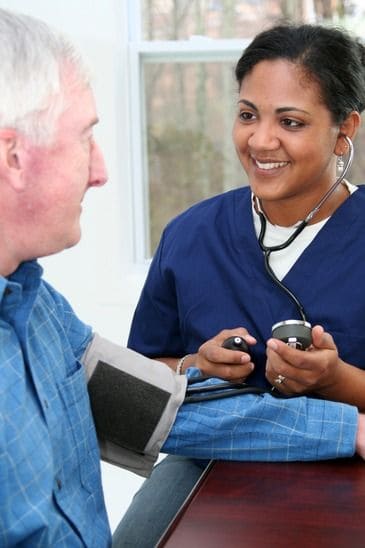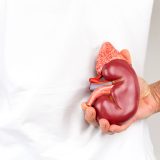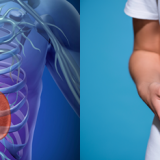

High blood pressure is a major health concern, greatly increasing the risk for heart disease, kidney disease and stroke. The American Heart Association estimates high blood pressure, otherwise known as hypertension, affects approximately one in three adults in the United States. Unfortunately, its lack of warning signs allows hypertension to easily go unnoticed. Before more people succumb to a tragic event caused by uncontrolled high blood pressure, all efforts to increase awareness of this treatable condition are essential.
About Hypertension
Composed of two numbers, systolic and diastolic, high blood pressure is when the pressure in the arteries is high. Systolic pressure is the top number, and that corresponds to the pressure in the arteries as the heart contracts. Diastolic pressure is the bottom number, and that corresponds with the pressure in the arteries as the heart relaxes. Although the ranges are considered to be approximate, the following are generally accepted:
- Normal blood pressure is below 120/80
- Pre-hypertension blood pressure is between 120/80 and 139/89
- Hypertension blood pressure is 140/90 or above
Because high blood pressure often causes no symptoms for many years (or decades) until it finally causes irreparable damage, it is referred to as a silent killer. High blood pressure that goes unnoticed and untreated can eventually cause damage to:
- blood vessels in the eyes
- the heart
- the arteries
- the kidneys
- the brain
Potential devastating consequences of hypertension that is not detected and addressed include heart attack, kidney failure, blindness and stroke. Thus, being aware of your current blood pressure numbers is a vital part of staying healthy.
Blood Pressure Awareness
The only way to know if your blood pressure is high is through regular checkups. If it’s been a while since your blood pressure was taken, the following five situations are reasons to get your systolic and diastolic pressures taken:
- Your last reading was in the pre-hypertension range – An estimated 30 percent of American adults have pre-hypertension, a condition believed to nearly double stroke risk. Blood pressure seems to rise with age, so those with blood pressures between 120/80 and 139/89 a few years ago could have numbers that have risen by now. One study demonstrated that women’s blood pressures inched upward 8 to 10 points each decade, and men’s by 4 to 5 points, between the ages of 35 and 64.
- You usually get high readings in the doctor’s office – Although most people shrug off high blood pressure readings at the doctor’s as a result of stress, this should not be ignored. A Scottish study concluded that people with ‘white coat hypertension’ (where blood pressure is elevated when under stress) demonstrated early signs of stiff arteries and an overworked heart that could lead to hypertension in the future.
- You haven’t stopped smoking yet – It feels good to think you are invincible, but the evidence for smokers contradicts invincibility. A person’s risk of heart attack greatly increases with the number of cigarettes he or she smokes. In addition, the longer a person smokes, the greater his or her risk of having a heart attack. People who smoke a pack of cigarettes a day have more than twice the risk of heart attack than non-smokers. Two of the reasons that smoking is so harmful are because the nicotine in cigarettes increases blood pressure and heart rate as well as damages the lining of blood vessels.
- You are overweight – Excess weight directly increases blood pressure. There are several reasons for this relationship, including excessive strain on the kidneys. The kidneys are the organs primarily responsible for regulating blood pressure, and extra weight on the kidneys demands they are fed by a greater blood pressure to function. In addition, being overweight means there is excessive fat around the organs and in blood vessels. This narrows blood vessels, which raises blood pressure.
- You have hypertensive symptoms – Most people with high blood pressure are asymptomatic, but if there are hypertensive symptoms, such as chest pain, confusion, excessive tiredness, intense headache, nausea and vomiting, shortness of breath, blood in the urine, pounding in the head, chest and ears, significant sweating, vision changes, tinnitus, irregular heartbeat, confusion or nosebleed – do not delay in getting checked by a physician. Symptoms like these could indicate a dangerously high blood pressure termed a hypertensive crisis.
The five situations listed above are not intended to be frightening, but rather to draw attention to how many of us need to be monitoring our blood pressure. High blood pressure in and of itself is not so scary; it can be managed and even reversed with lifestyle changes and/or medications. Since the real danger lies in not knowing that you are hypertensive, the solution is simple – be sure to get your blood pressure checked regularly.




